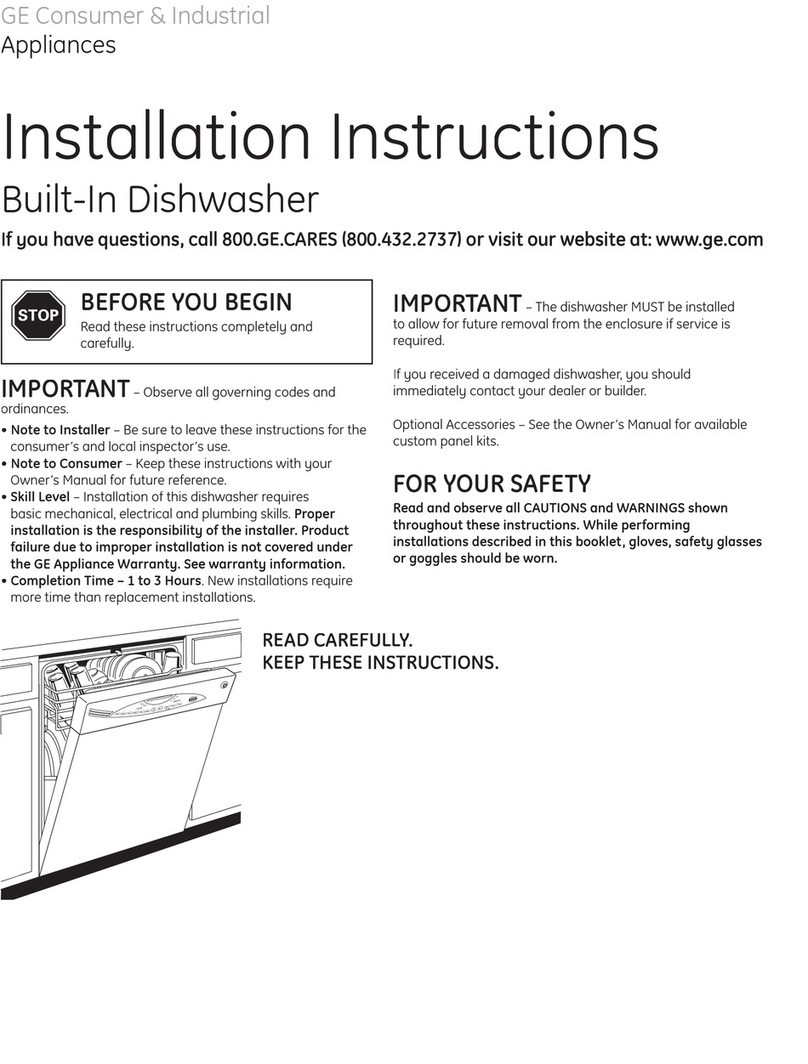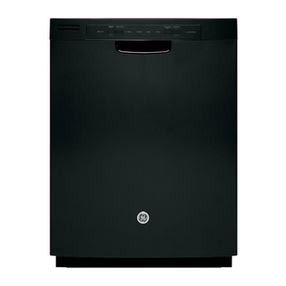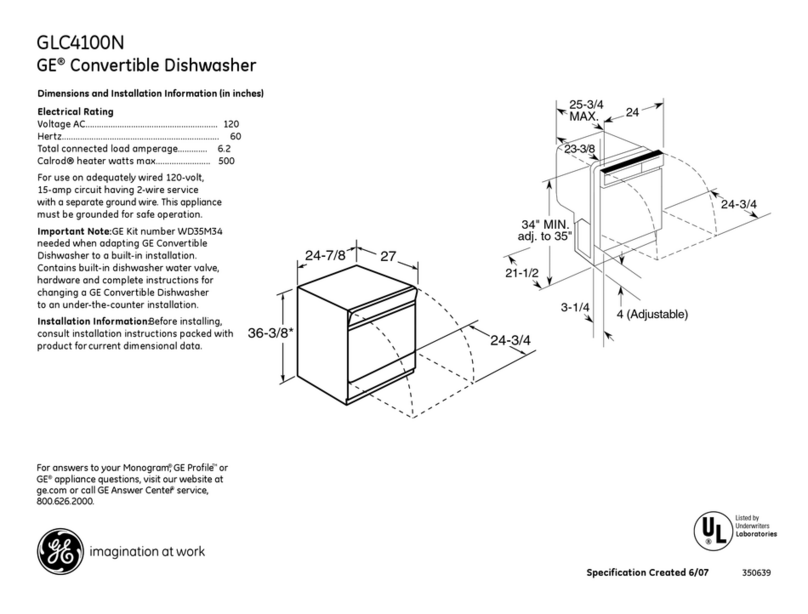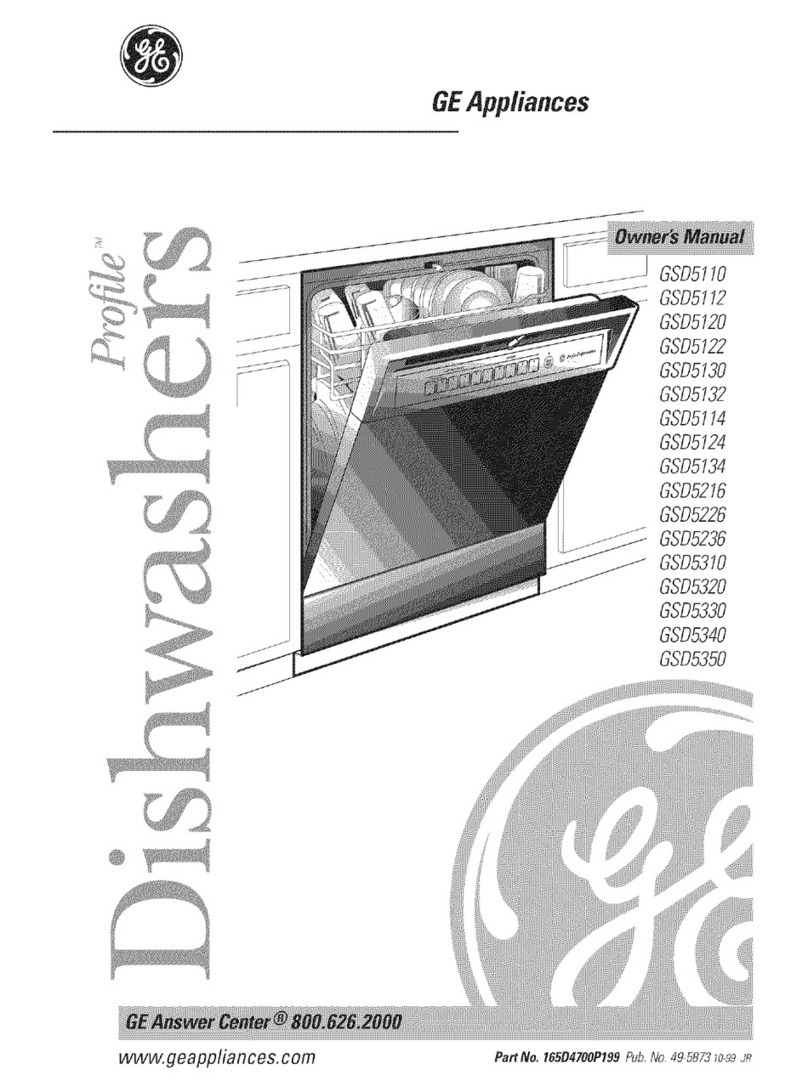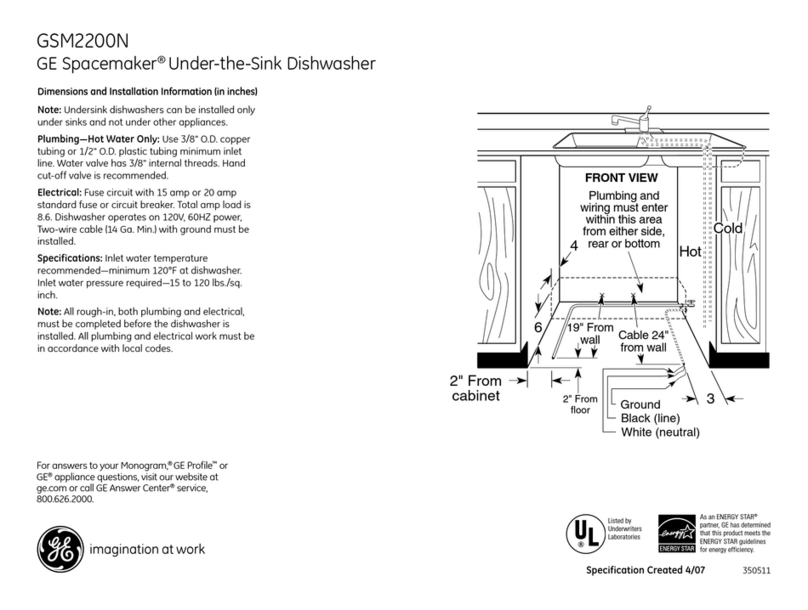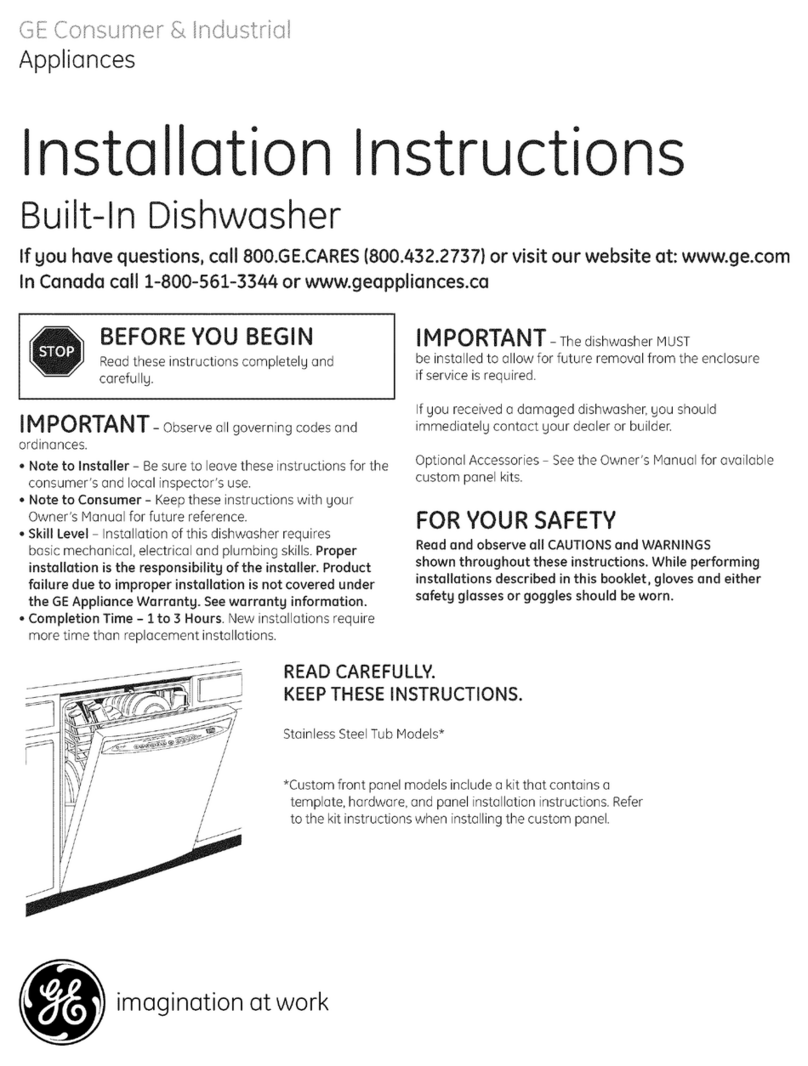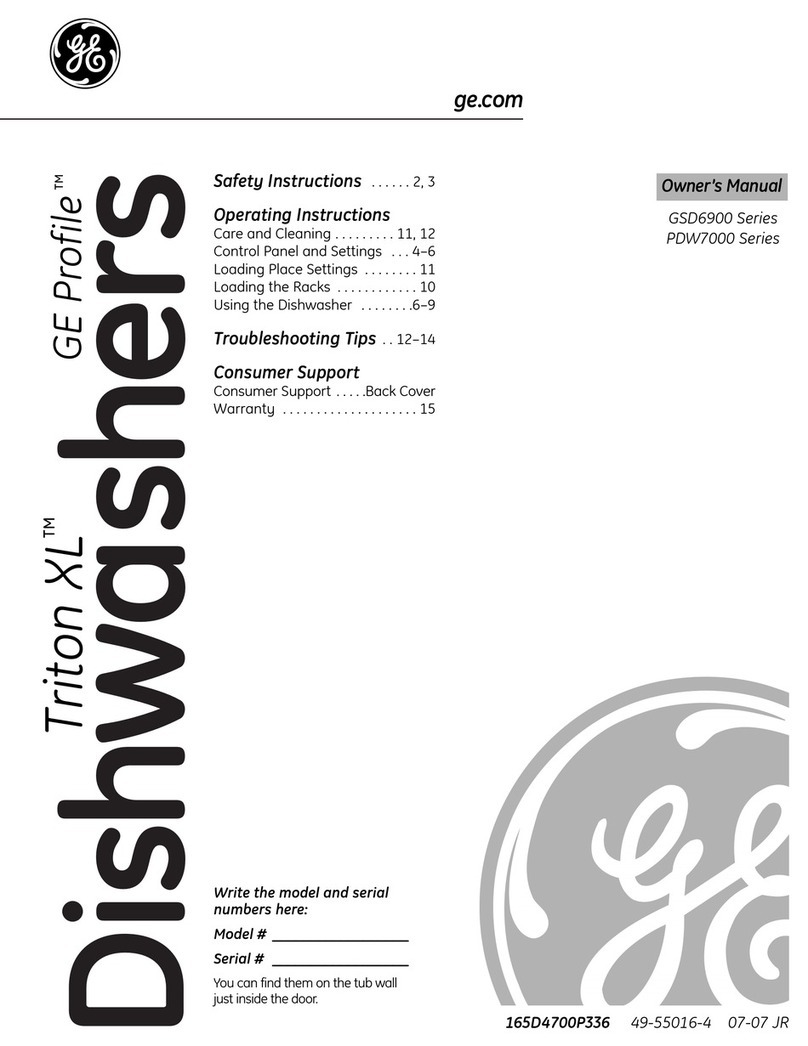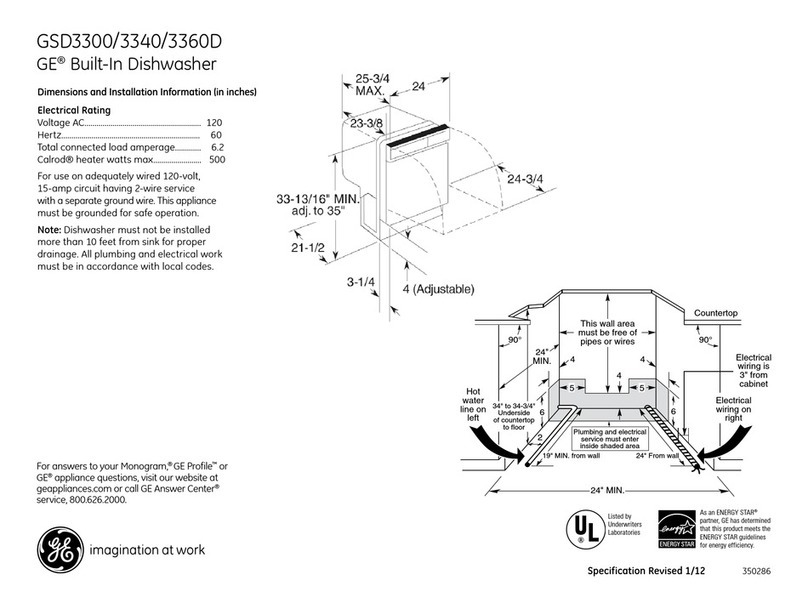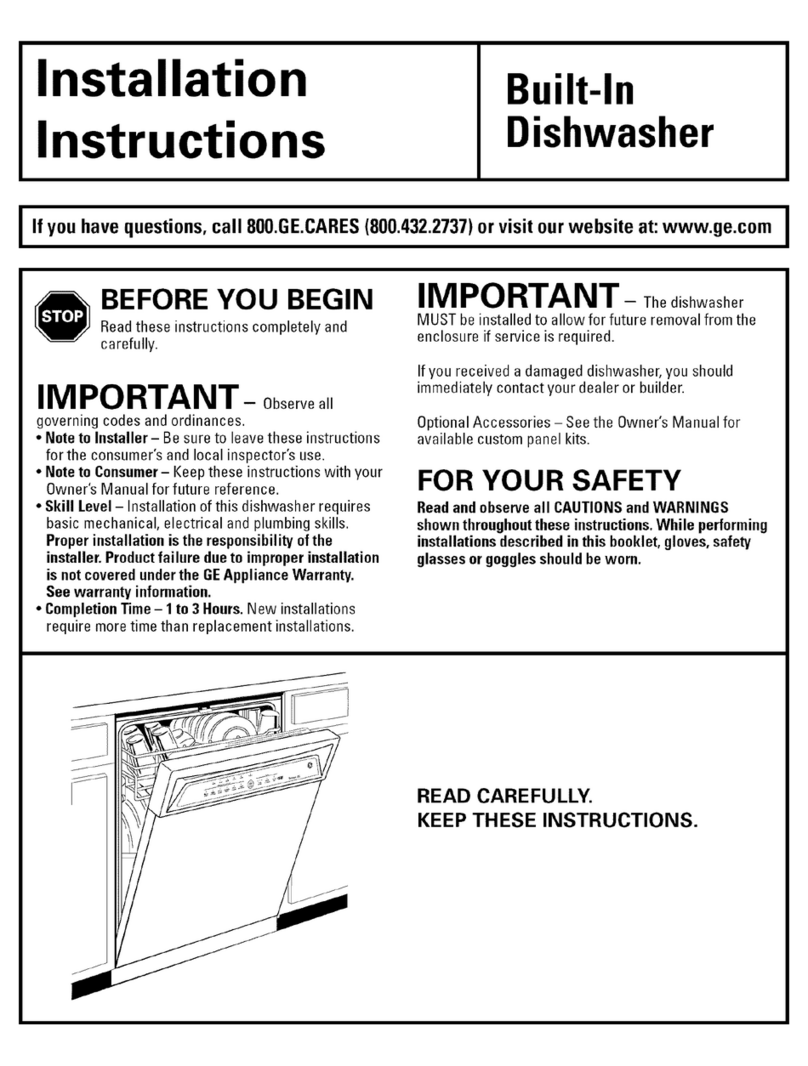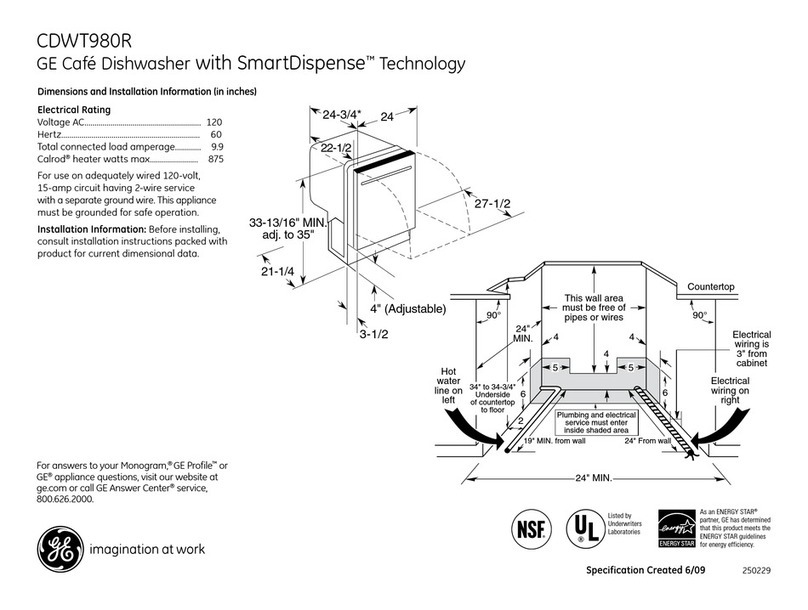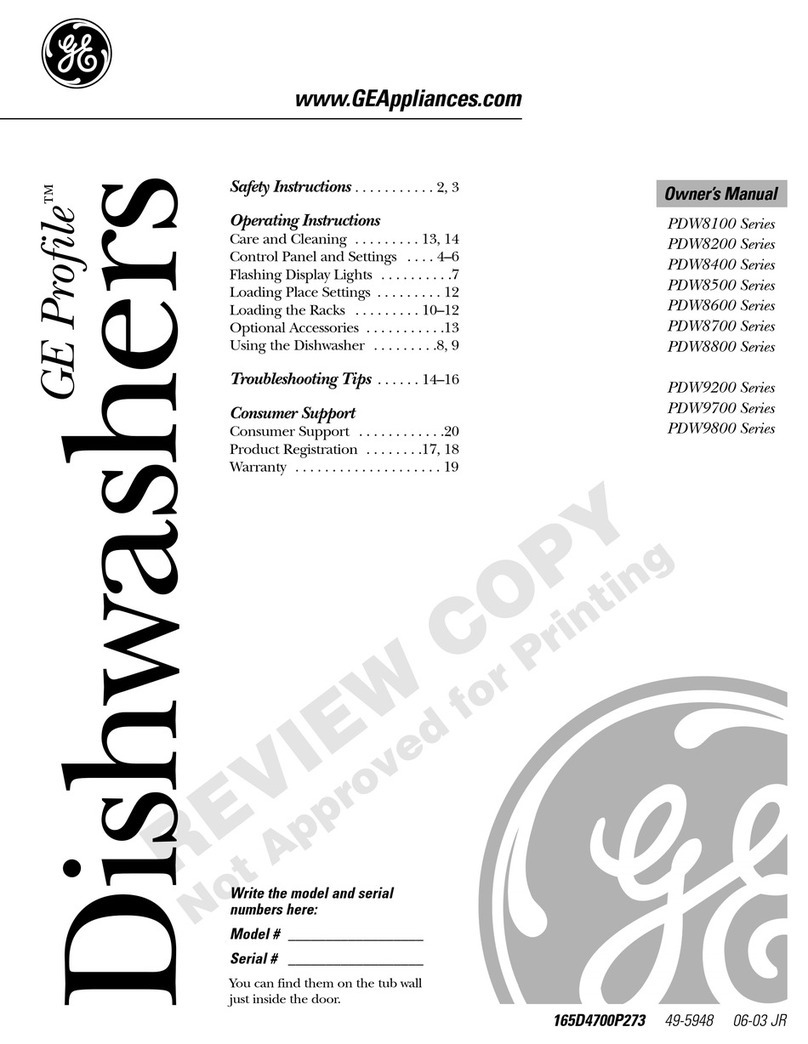Good dishwashing
starts with HOT water
To get dishes clean and dry you
need hot water. To help you get
water of the proper temperature,
your General Electric dishwasher
has awater heating feature that
automatically senses the tempera-
ture of the water in the wash cycle
and heats it, if necessary, to the
proper temperature. This water
heating feature may allow you to
turn down your household water
heater and save energy if you’re
willing to let the dishwasher run a
little longer while it heats water to
the proper temperature. For good
washing and drying, the entering
water must be at least 120°F.To
prevent dish damage, inlet water
should not exceed 150”F.
Check your water temperature
with acandy or meat thermome-
ter. Turn on the hot water faucet
nearest the dishwasher. Put the
thermometer in aglass and let the
water run continuously into the
glass until the temperature stops
rising. If the water temperature is
below 120”F.adjust your water
heater.
Helpful hints: If outside tempera-
tures are unusually low or if your
water travels along distance from
heater to dishwasher you may need
to set your heater’s thermostat up.
If you have not used hot water for
some time, the water in the pipes
will be cold. Turn on the hot water
faucet at the sink and allow it to
run until the water is hot. Then
start the dishwasher. If you’ve
recently done laundry or run hot
water for showers, give your water
heater time to recover before
operating the dishwasher.
You can help prevent
spotting with arinse
agent
Arinse agent makes water flow off
dishes quicker than usual. This
lessens water spotting. Makes
drying faster, too.
For best dishwashing perform-
ance, use of arinse agent is
recommended.
Rinse agents come in either liquid
or solid form. Your dishwasher’s
dispenser uses the liquid form.
Here’s how to fill the rinse agent
dispenser. Unscrew the cap. Add
the liquid rinse agent until it just
reaches the bottom of the lip inside
the dispenser opening. Replace the
cap. The dispenser automatically
releases the rinse agent into the
final rinse water.
If you accidentally spill: Wipe up
the rinse agent with adamp cloth.
Don’t leave the spill in the
dishwasher. It can keep your
detergent from working.
If you can’t find any rinse agent,
write:
ECONOMICS LABORATORY,
INC.
(“JET DRY”)
Osborn Building
St. Paul, Minnesota 55102
Your dishwasher’s rinse agent
container holds 4Y2ounces. This
should last about 3months. Fill
as needed. Do not overfill, add
only 4‘/zounces.
How to choose and use
detergent
First, use only detergent
specifically made for use in
dishwashers. Other types will
cause oversudsing.
Second, check the phosphate
content. Phosphate helps prevent
hard-water materials from forming
spots or film on your dishes. If
your water is hard (7 grains or
more), your detergent has to work
harder. Detergents with ahigher
phosphate level will probably work
better. If the phosphate content is
low (8.7070or less), you’ll have to
use extra detergent with hard
water.
Your water department can tell
you how hard your water is. So
can your rural county agent. Or
your area’s water softener com-
pany. Just call and ask them how
many “grains” of hardness is in
your water.
How much detergent should you
use? That depends. Is your water
“hard” or “soft?” With hard
water, you need extra detergent to
get dishes clean. With soft water,
you need less detergent.
Too much detergent with soft
water not only wastes money, it
can be harmful. It can cause a
permanent cloudiness of glass-
ware, called “etching:’ An outside
layer of glass is etched away! Of
course, this takes some time. But
why take achance when it’s easy
to find out the hardness of your
water.
Keep your detergent fresh and
dry. Under the sink isn’t agood
place to store detergent. Too much
moisture. Don’t put detergent into
the dispenser until you’re ready to
wash dishes, either. (It won’t be
fresh OR dry.)
6
